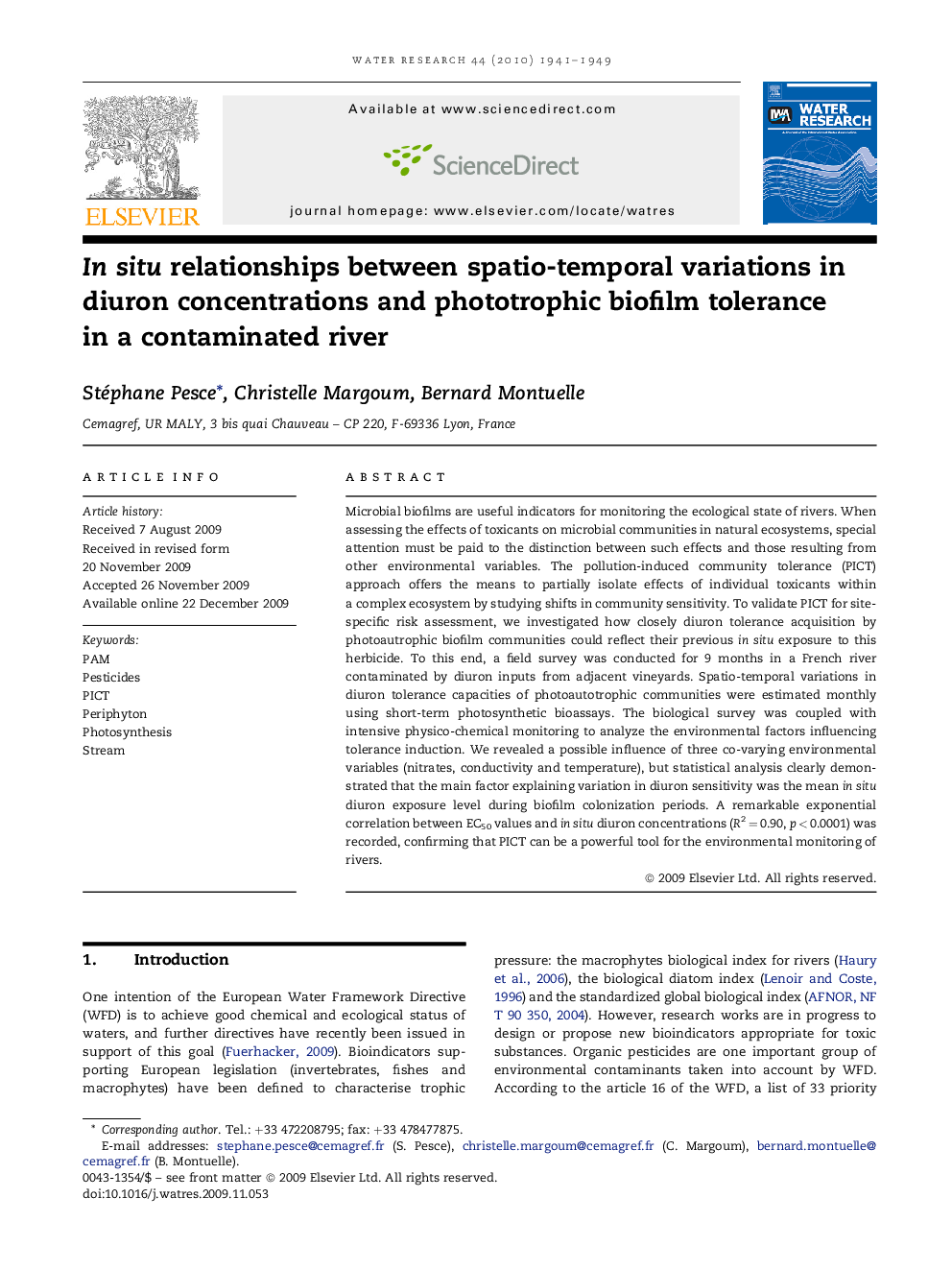| Article ID | Journal | Published Year | Pages | File Type |
|---|---|---|---|---|
| 4484174 | Water Research | 2010 | 9 Pages |
Microbial biofilms are useful indicators for monitoring the ecological state of rivers. When assessing the effects of toxicants on microbial communities in natural ecosystems, special attention must be paid to the distinction between such effects and those resulting from other environmental variables. The pollution-induced community tolerance (PICT) approach offers the means to partially isolate effects of individual toxicants within a complex ecosystem by studying shifts in community sensitivity. To validate PICT for site-specific risk assessment, we investigated how closely diuron tolerance acquisition by photoautrophic biofilm communities could reflect their previous in situ exposure to this herbicide. To this end, a field survey was conducted for 9 months in a French river contaminated by diuron inputs from adjacent vineyards. Spatio-temporal variations in diuron tolerance capacities of photoautotrophic communities were estimated monthly using short-term photosynthetic bioassays. The biological survey was coupled with intensive physico-chemical monitoring to analyze the environmental factors influencing tolerance induction. We revealed a possible influence of three co-varying environmental variables (nitrates, conductivity and temperature), but statistical analysis clearly demonstrated that the main factor explaining variation in diuron sensitivity was the mean in situ diuron exposure level during biofilm colonization periods. A remarkable exponential correlation between EC50 values and in situ diuron concentrations (R2 = 0.90, p < 0.0001) was recorded, confirming that PICT can be a powerful tool for the environmental monitoring of rivers.
